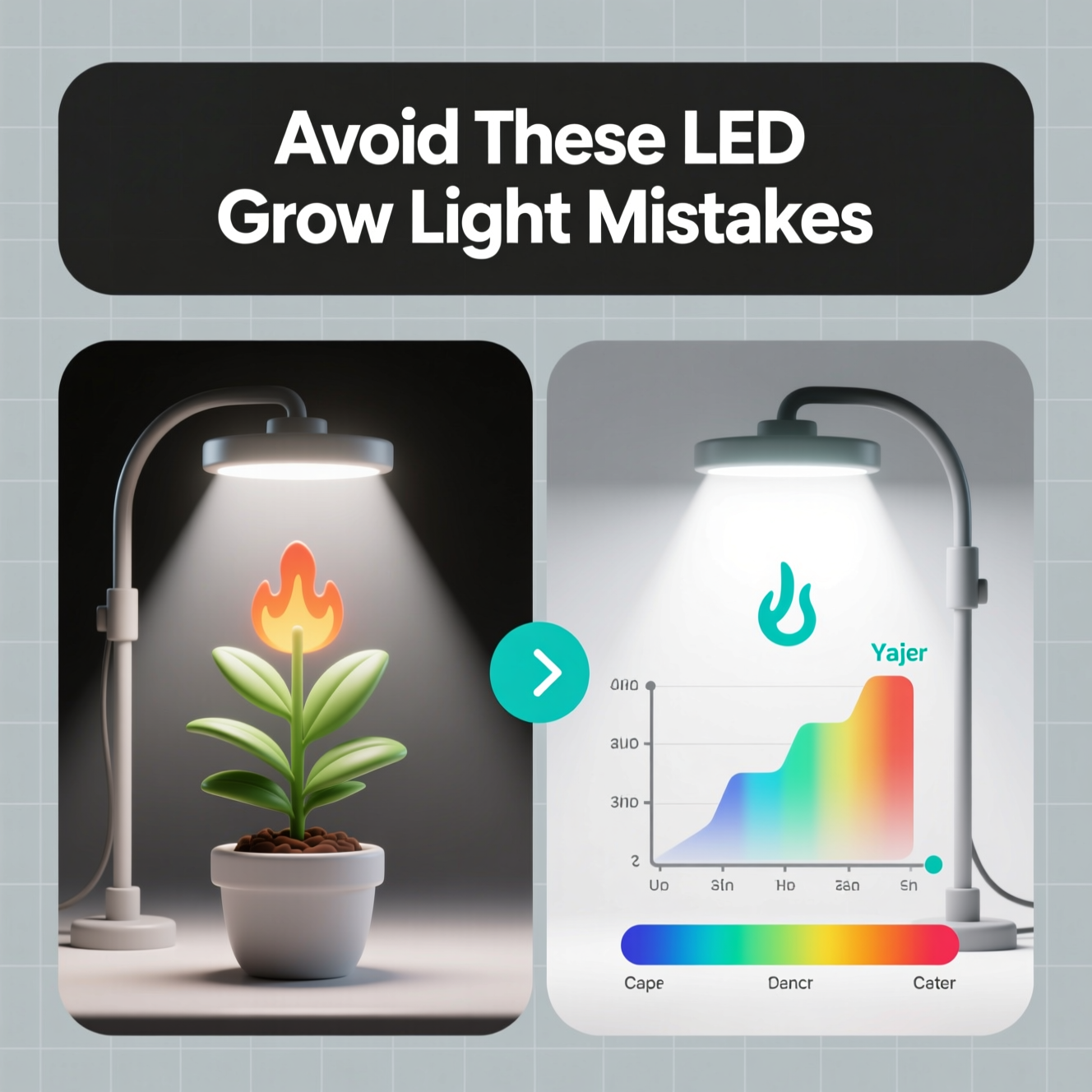Introduction to Modern LED Grow Lights
Modern LED grow lights are revolutionizing indoor gardening. They offer superior energy efficiency and customizable spectrum output. This technology enhances plant growth with precision. For most gardeners, they represent a significant upgrade. To understand the various types available, learn more in our comprehensive guide to full-spectrum LED grow lights.
To understand the various types available, learn more in our comprehensive guide to full-spectrum LED grow lights.
LEDs achieve up to 60% energy savings over older systems. They also provide excellent luminous efficacy. Recent studies show efficiencies can reach 3.0 µmol/J. Their extended lifespan, from 25,000 to 50,000 hours, surpasses traditional lamps. These lights deliver targeted photosynthetically active radiation.
To understand how these savings are achieved, learn more about energy-efficient LED grow lights.
Moreover, spectrum tuning actively enhances photosynthesis. Research demonstrates a 20% increase compared to broad-spectrum sources. This precise control ensures optimal plant growth. In summary, LED technology provides a sustainable and effective solution for indoor gardening.
For growers looking to optimize costs, discover effective solutions in our guide to budget-friendly LED grow lights.
Core Technical Principles of LED Efficiency
Understanding LED efficacy is crucial for optimizing horticultural lighting. Key metrics include Photosynthetic Photon Flux (PPF) and Photosynthetic Photon Flux Density (PPFD). Efficacy quantifies how effectively an LED converts electrical energy into usable light for plant growth, measured in micromoles per Joule (µmol/J). Current high-efficiency LEDs achieve efficacy levels exceeding 3.0 µmol/J, as noted by horticultural lighting specialists.
Spectral quality, encompassing the distribution of light wavelengths, directly impacts photosynthetic efficiency. Optimized LED designs often feature precise ratios of red and blue light, enhancing plant response by up to 25%. Furthermore, effective thermal management is paramount for maintaining both efficacy and spectral stability over an extended operational lifespan. Advanced thermal dissipation strategies can increase LED longevity by over 30%.
High-efficiency LEDs demonstrate remarkable energy conversion, with some models converting over 45% of electrical energy into photons beneficial for photosynthesis. This advanced performance ensures optimal light penetration and utilization, a critical factor for maximizing crop yields and plant health under artificial lighting conditions. This focus on spectral quality and thermal management exemplifies modern best practices in LED horticultural lighting.
Comparative Analysis of Leading Brands
Evaluating top LED grow light brands like Mars Hydro, Spider Farmer, Viparspectra, and HLG reveals distinct performance metrics. Each brand offers unique benefits in spectral tuning, efficacy, and thermal management for optimizing plant growth. Independent tests highlight varied strengths, guiding growers toward the best fit.
Spider Farmer models often achieve high efficacy, reaching up to 3.0 µmol/J with advanced spectral tuning. By contrast, Mars Hydro lights frequently demonstrate superior heat dissipation, potentially extending their lifespan by roughly 20%. Viparspectra offers more economical solutions, typically around 2.2 µmol/J efficacy, which is beneficial for budget-conscious growers. This variation in efficacy directly impacts energy efficiency and overall crop yield potential.
In practical terms, ensuring optimal light uniformity and considering the projected lifespan are critical. While HLG is known for its premium quality and performance, the other brands provide competitive features. Careful consideration of these performance metrics, coupled with thermal management and spectral quality, aids in selecting the most suitable LED grow light for specific cultivation needs.
Technical Strategies for Optimizing LED Grow Performance
Optimizing LED grow lights is crucial for maximizing plant growth efficiency and energy efficiency. Understanding spectral ratios, such as the 3:1 to 5:1 red:blue ratio favored for flowering stages, can significantly enhance yield, as noted by studies. Proper PPFD (Photosynthetic Photon Flux Density) ensures adequate light energy reaches the plants, promoting robust development.
LED placement and light uniformity are critical factors influencing overall plant health and growth. Advanced dimming technology allows for precise control over light intensity, which can reduce energy consumption by 15-20% according to recent research. This photoperiodic response tuning, combined with optimized spectral ratios, can improve leaf area index (LAI), a key predictor of crop yield, as demonstrated by scientific findings. Consequently, these technical strategies elevate horticultural outcomes.

Angelina Everly leads the editorial desk at Live Green Gardens, blending practical plant care, hands-on product testing, and approachable outdoor styling. She focuses on step-by-step how-tos, buyer’s guides, and small-space makeovers that work in real life and real budgets. When she’s not comparing pruning shears or setting up a drip kit, you’ll find her creating cozy corners with planters, solar lights, and pollinator-friendly picks—always with clear pros/cons and safety notes so you can buy once and garden happy.

